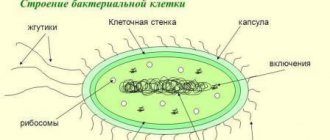Presentation “Poland”, 11th grade presentation for a geography lesson (11th grade) on the topic
Slide 1
Republic of Poland Brief information: Area - 312,685 km2 Population - 38.6 million people. Capital - Warsaw State system - republic GDP - 4910 US dollars (per capita)
Slide 2
History of Poland The date of creation of the first Polish state is considered to be 966. Poland became a kingdom in 1025, and in 1569 united with the Grand Duchy of Lithuania. In 1795, as a result of three partitions, when the territory was divided between Prussia, Austria and Russia, the Polish state ceased to exist. Poland regained its independence in 1918 after World War I, but was occupied by Nazi Germany in 1939. After the war, Poland became a socialist republic dependent on the USSR. In 1989, changes took place in the political system and the transition to a market economy. Poland 992-1025
Slide 3
Geographical location Poland belongs to the Eastern subregion. Her GP is quite favorable. Poland has extensive access to the Baltic Sea, which provides connections with other countries. Poland is located at the intersection of important trade routes, which allows it to charge transit duties.
Slide 4
Geographical location Poland borders on seven countries: Russia, Lithuania, Ukraine, Belarus, Slovakia, Germany, Czech Republic. In the north there are plains, beautiful beaches, many lakes, in the south there are mountains and forests.
Slide 5
Economy Poland is a former socialist country, so its economy was seriously affected by the political changes that occurred in the early 90s. So, at this time a wave of privatization began, during which the bulk of state property passed into private hands. Poland has high unemployment (18% in 2004, but only 6.5% in 2008). Agriculture suffers from a lack of investment, an abundance of small farms and redundant staff. Poland is an industrial-agrarian country.
Slide 6
Economy and resources In Poland, mining is carried out: Hard and brown coal (Upper Silesian basin) Natural gas (minor volumes) Sulfur; Table salt; Ore, copper, zinc; Logging; Amber. Coal
Slide 7
Production The main branches of specialization are: Mechanical engineering Ferrous and non-ferrous (large zinc production) metallurgy Chemical Textile and clothing Cement Production of porcelain and earthenware Production of sporting goods (yachts, tents, etc.).
Slide 8
Population The population of Poland is approximately 38 million people. Of these, 49% are women, 51% are men. The urbanization level is 64%. The national composition is homogeneous, 98% are Poles. 94% of the population profess Catholicism. Natural increase is 6% 0
Slide 9
Agriculture Type of agriculture – Central European. Livestock farming predominates, dairy and meat and dairy farming are developed. Crop farming is represented by the production of rye, wheat, potatoes, industrial and fodder crops, beets, flax, and tobacco. Due to the geographical location, the land is not very fertile. In private agriculture, the horse remains an important draft force, although the number of tractors used has increased dramatically.
Poland THE PRESENTATION WAS PREPARED BY STUDENTS OF 11 “B” CLASS AKHAEV MILAN AND YAKUPOVA SABINA. - presentation
Poland PRESENTATION PREPARED BY STUDENTS OF 11 “B” CLASS AKHAEV MILAN AND YAKUPOVA SABINA
Poland is located in the central part of the European continent. In the west, Poland borders with Germany (border length 467 km), in the south with the Czech Republic (790 km), in the east with Ukraine (529 km), Belarus (416 km), Lithuania (103 km) and Russia (210 km). The total length of Poland's land and water borders is 3,496 km. The territory of Poland is located at the junction of three large tectonic units: the Precambrian East European Platform, the Paleozoic Platform of Central and Western Europe and the Alpine Fold Region.
Government structure of Poland
The Republic of Poland is a state with a republican system, the government in which is elected by citizens. Poland is a parliamentary democracy with a bicameral parliament. This means that all citizens have the right to actively participate in the government of the state, have a constitutionally guaranteed influence on its fate and have equal rights. In 1989, the institutions of the President and Senate were established. The name of the state was also restored - the Polish-Lithuanian Commonwealth. On January 1, 1999, a new administrative division of the state was adopted: the territory of Poland is divided into 16 voivodeships, 315 povets and 65 cities.
The state legislative bodies are the Sejm and the Senate, and the executive branch is represented by the President and the Council of Ministers. The Sejm consists of 460 deputies elected for a four-year term. The Senate consists of 100 deputies who are elected for the term of office of the Sejm. The head of state is the president, elected for a 5-year term by general elections. Currently, these functions are performed by Lech Kaczynski, the head of government, Kazimierz Marcinkiewicz. The Polish political system consists of public administration, political parties and legal norms (the Constitution of the Republic of Poland, legislative and executive acts). The Constitution was adopted on April 2, 1997.
Every Polish citizen who enjoys full public rights and who is 21 years old by the time of the elections can become a deputy. You can become a senator at the age of at least 30 years. During voting in parliament, neither deputies nor senators bind their constituents with any instructions. The Constitution obliges members of both houses of parliament to be guided by the interests of the Republic of Poland as a whole.
The Council of Ministers, that is, the Polish government, consists of more than a dozen ministries and central departments. The Council of Ministers is an executive body. The Law on the Activities of State Administration gives the Prime Minister, who heads the Council of Ministers, greater opportunities in forming government personnel. Chairmen of committees specified in legislation, for example the European Integration Committee, can also be appointed to the Council of Ministers. Currently, the Council of Ministers consists of the Prime Minister and 17 ministers.
In Poland, as in every European country, there is a part of society that is not able to support itself and needs the care of the state or specialized non-governmental organizations. An interested person or family can apply for social assistance to the appropriate institution at their place of residence. The state provided special care to children and youth, organizing so-called “family” orphanages, adaptation and guardianship centers, educational institutions, playrooms, children’s corners and interest clubs for children and youth.
Poland has a three-tier administrative structure. The state is divided into voivodeships, in which povets exist. And povets, in turn, are divided into gminas. The first post-war administrative division occurred in 1946. Then 14 voivodeships and two large cities were created as independent units: Warsaw, as the capital of the state, and Lodz. The voivodeships were divided into 299 povets, 29 of which were urban. Poviats were divided into communes, the number of which reached three thousand. In 1950, three new voivodeships emerged, the centers of which were Koszalin, Zielona Gora and Opole. This administrative division remained unchanged until 1975.
Poznań Voivodeship was the largest, its length was 39.2 thousand square kilometers, the smallest was Gdańsk - 10.7 thousand km². The first place in terms of population was occupied by the Silesian Voivodeship - millions of people, and Olsztyn took the last place. The population of this voivodeship was no more than 352 thousand people. The administrative reform on June 1, 1975 divided the country into 49 voivodeships and communes. Since 1999, a new administrative division was introduced. Poland is divided into 16 voivodeships, 379 povets (65 urban and 314 rural), and 2,478 communes (307 urban, 582 rural-urban and 1,589 rural).
Agriculture
In Poland, 38% of the population lives in rural areas and about 27% works on agricultural farms. For a number of regions, agriculture continues to be the main sector of the economy, despite the constant decline in its importance. Polish agriculture is characterized by a large fragmentation of farms, a high level of workers employed in it, the dominance of soils with medium and low agricultural suitability, and a relatively low use of industrial means of production. The land area is 19.2 million hectares, which puts Poland in third place in the EU - after France and Spain. Over 95% of farmland is used in the private sector, including 87.7% by individual farms.
Cereal crops, especially wheat and rye, are the most important crops in Poland. The next most important crops are potatoes, fodder crops, sugar beets, oilseeds and legumes. In livestock farming, pig farming and cattle breeding predominate, ahead of poultry farming and sheep farming, which is quite common in the south of the country. Horticulture is well developed in Poland and provides a wide selection of fresh and processed fruits and vegetables. Among the most important plant products in Polish agricultural and food exports, the most significant position is occupied by fruits and their products, as well as sugar. Poland primarily exports apples and soft fruits such as strawberries and raspberries, and processed products - frozen strawberries, raspberries, black currants, as well as fruit juices, mainly apple.
Animal products occupy a significant place in Polish exports. The share of exports of live animals is decreasing, although in quantitative and monetary terms their exports have increased significantly. Both the share and dynamics of exports of processed meat and dairy products are also increasing. An increase in the value of exports occurs for almost all products of animal origin. Unpredictable weather conditions and variable profitability of grains and other crops are reflected in the instability of Polish agricultural production, which does not have a system of regulation through guaranteed purchases. All commercial risk rests entirely with the manufacturer. Only a very small part of grain supplies is covered by preliminary contracts based on agreements between farmers and food producers, including: sugar beets, rapeseed seed, vegetables and flowers. Mixed types of agriculture (cereal cultivation and livestock farming) predominate in most Polish peasant farms, since there is usually no clear specialization. As a result, products intended for sale account for only about 60% of the total volume of agricultural production, and all remaining goods go to cover the personal needs of the peasants themselves, which is a characteristic feature of Polish agriculture.
But despite this, Poland is a significant producer of a number of agricultural products in the world and Europe. In particular, this applies to rye, potatoes, meat, and milk. Poland is also one of the leading producers of berries, mainly strawberries, raspberries and currants, as well as one of the largest producers of onions, apples, cauliflower and cabbage.
Industry
Polish industry consists of over 380 thousand economic entities. The vast majority of industrial enterprises in Poland are private entities. In 2003, they accounted for 99% of all companies (of which 1.3% are foreign entities operating in Poland and 0.5% are mixed ownership entities with an advantage of private capital). The private sector produces about ¾ of industrial output and employs almost 80% of workers employed in Polish industry.
According to data for 2004, the vast majority of industrial entities were engaged in processing (98.5%), and within this category the largest group were companies specializing in the production of metal products (over 52 thousand). The next largest groups are companies involved in the production of clothing and fur industry, furniture production, as well as the production of wood and wooden products. More information about the importance of individual industries in Poland in the part: “Participation of individual industries in the compilation of GDP.”
The structure of the Polish economy has changed greatly over the past 15 years. The importance of the service sector has increased, while the importance of industry has decreased. Currently, industry accounts for about ¼ of the added value of Polish GDP (see table 25.1). These changes were the result of both the dynamic development of the service sector - which is a worldwide phenomenon - and the fundamental restructuring of the inefficient state-owned industrial enterprise sector in Poland in the 1990s. At the same time, this process was accompanied by the development of modern industries, which occurred mainly due to foreign investments. After a period of deteriorating economic conditions over the years, since 2003 Polish industry has been one of the fastest growing among the countries of the European Union. In 2004, the growth rate of products sold was 11.7%, with the average for the European Union countries at 2.1%.
A very significant change that has occurred in recent years has also been the rapid growth of exports of industrial goods, with a simultaneous increase in the participation in the export of highly processed products. Currently, the largest position in the export of industrial goods is made up of products from the electrical engineering industry. The sale of products from the chemical and metallurgical industries is also of great importance.
International organizations, which include PolandNATO (since 1999), European Union (since 2004)
Natural resources
The most important natural resources that Poland has are: hard and brown coal, copper ores, zinc and lead ores, silver, sulfur, rock salt, building stone, earth gas and oil. The largest part of energy raw materials consists of coal resources. The annual production of hard coal in Poland reaches approx. 100 million tons. At the end of 2003, the location of approx. 4.8 billion tons of resources of these raw materials (including approximately 3.9 billion tons of easily accessible resources). 26 slide) Coal production in Poland is approx. 2.2%, and brown coal – up to approx. 7% of world production.* Less abundant are the earth's gas resources (national production in 2005 provided about 30% of the demand for this raw material), and even less abundant are oil resources: here the total documented resources are lower than the annual processing of oil refineries factories.
The main advantage of this energy balance structure is the fact that the production uses the cheapest raw materials available in Poland. This structure, however, has been undergoing changes in recent years (the share of oil and earthly gas is growing), but changes are coming slowly and, according to forecasts of the International Energy Agency (IEA), the share of these raw materials in meeting Poland’s energy needs will remain at a comparable level (approx. 96 %) even until 2020. Among the other listed types of raw materials, it is worth mentioning copper resources. Poland produces approx. 3.3% of global refined copper production
Development prospects
Poland has a chance to play a significant role in the single internal market in the enlarged European Union. In terms of population, Poland ranks sixth after France, Germany, Great Britain, Italy and Spain. Poland, despite the economic crisis, is experiencing an increase in its labor force, which will continue until 2012 and will account for 40% of the increase in the labor force in Europe. Undoubtedly, this will have an impact on Poland's competitive position.
In the context of deepening interdependence between national economies, integration with the EU will become one of the leading areas for creating opportunities for the economic development of Poland as an important source of growth in static results. In addition, when reaching higher stages of integration, the intensity of manifestations of these effects increases. Therefore, it can be argued that Poland’s entry into the structures of the European Union will cause in the future an acceleration of the pace of its economic development
Geography Presentations
Create your teacher website PC and PPC courses Video lessons Olympiad Webinars for teachers
- home
- Geography
- Presentations
Watch and download free lessons, tests, notes, presentations and other useful materials on geography for teachers and students. In this section you can get presentations on geography .
- All 10510
- Lessons 4782
- Presentations 2625
- Tests 677
- Planning 788
- Events 524
- Other 1114
- All classes
- For preschoolers
- 1 class
- 2nd grade
- 3rd grade
- 4th grade
- 5th grade
- 6th grade
- 7th grade
- 8th grade
- 9th grade
- Grade 10
- Grade 11
Russians on the labor market. Presentation for a geography lesson. 8th grade Presentation for the 8th grade geography lesson “Russians on the labor market.” UMK "Polar Star". ... 10/05/2020 Shirshonkova Elena Nikolaevna 14 0 |
| Presentation for the lesson “Geographic information systems” The presentation allows you to teach the lesson more fully. For colleagues, look at local material... 08/11/2020 Yakovleva Irinya Aleksandrovna 52 1 |
| Electronic educational resource on the topic “Solar System” Electronic educational resource is intended to repeat the topic “Solar System”... 08/11/2020 Grazhdankina Margarita Olegovna 67 3 |
| Presentation on geography on the topic: “Gobi Desert” (7th grade) The presentation expands students’ horizons about the nature of the Gobi Desert... 08/21/2020 Zaitseva Elena Vladimirovna 31 0 |
| Presentation “Characteristics of the Perm Territory” This presentation covers all topics of studying the native region: geographical location, nature, industry, population... 06/07/2020 Ovchinnikova Natalya Valeriyoevn 101 1 |
The history of the creation of parks in the village of Bizhbulyak The history of the creation of Bizhbulyak parks and an assessment of their current state ... 03/12/2020 Ivanova Zinaida Gennadievna 81 0 |
| Geography evening “Seven Feet Under the Keel” Geography game. Can be used during a subject week during a geographical evening.... 09/08/2020 Antyushin Boris Nikolaevich 29 0 |
| The history of the creation of parks in the village of Bizhbulyak The history of the creation of Bizhbulyak parks and an assessment of their current state Love for the Fatherland begins with love for your small homeland - the place where r… 03/12/2020 Ivanova Zinaida Gennadievna 93 1 |
| Zhahon iqtisodiy-izhtimoy geographysi jahondagi iqtisodiy o`sish haqida so`z boradi…. 06/12/2020 Mamatkulova Asila Murodjonovna 87 0 |
| Litvinchuk Svetlana Gennadievna Get acquainted with the various crafts of the Central region... 09/07/2020 Svetlana Gennadievna Litvinchuk 31 0 |
| Svetlana Gennadievna Litvinchuk Learning to recognize types of plains. Planning teacher-student collaboration…. 02.09.2020 Svetlana Gennadievna Litvinchuk 30 0 |
| Litvinchuk Svetlana Gennadievna To form in students an idea of the diversity of relief. and relationship with nature... 02.09.2020 Svetlana Gennadievna Litvinchuk 30 0 |
| Chemical industry chemical industry of Donetsk region. Its types and production of fertilizers…. 05/22/2020 Lipnitskaya Irina Vladimirovna 75 0 |
| Presentation: LRC “Kleban-Byk” Regional landscape park “Kleban-Byk” is a wonderful place for recreation and eco-tourism. A network of ecological routes and trails has been created in the park. Creation of a park... 05/03/2020 Belousko Larisa Nikolaevna, Zhdanov Arkhip 78 0 |
| “Unique planet-Earth” Unique planet Earth, presentation for a geography lesson... 09.10.2020 Khakimov Rafael 46 0 |
| Its own game “Nature of Russia” captivates students, while at the same time consolidating knowledge on the topic “Nature of Russia”... 08/28/2020 Kononova Lyudmila Nikolaevna 41 1 |
| Geographers at war Presentation dedicated to the 75th anniversary of Victory in the Second World War. The role of geographers during the war... 08/30/2020 Yurchenko Marina Valerievna 33 0 |
| The situation in the North Caucasus. The development is designed to understand the complex political situation in the North Caucasus... 09/14/2020 Maria Vladimirovna Oshur 20 0 |
| “Trees of natural zones of Russia” Methodological development - presentation on the characteristics of tree plantations (leaves, bark, adaptations for survival in certain climatic conditions) ... 09.15.2020 Lavrushkin Alexey Varsonofevich 21 0 |
| Svetlana Gennadievna Litvinchuk Introduce students to the influence of humans on climate. ... 09/03/2020 Svetlana Gennadievna Litvinchuk 31 0 |
- ← Back
- Continue →





